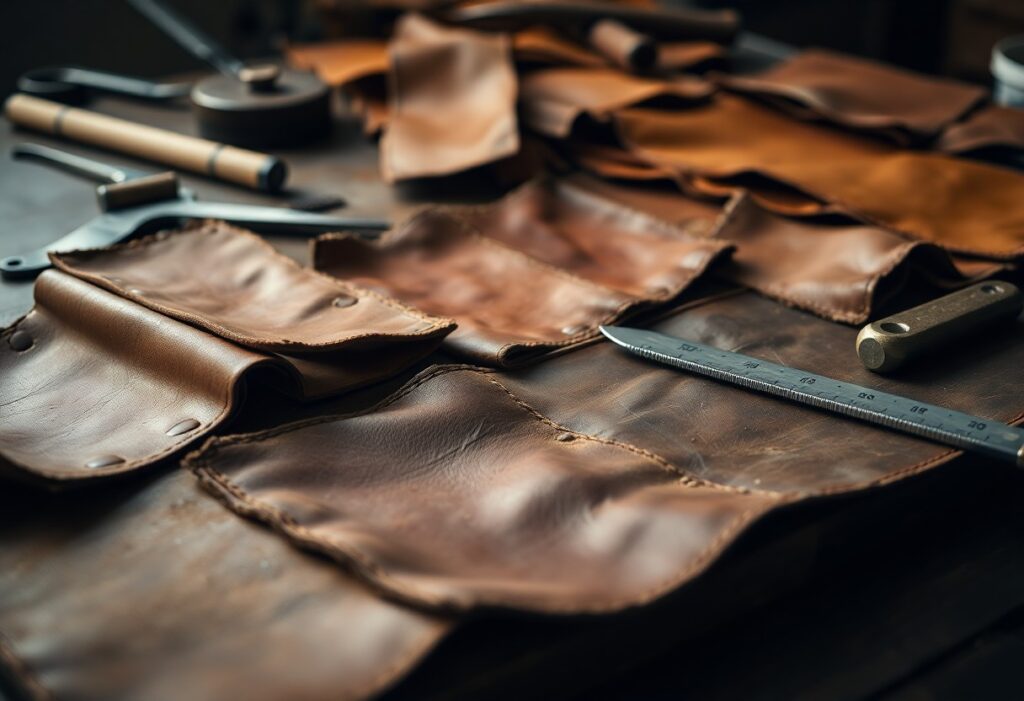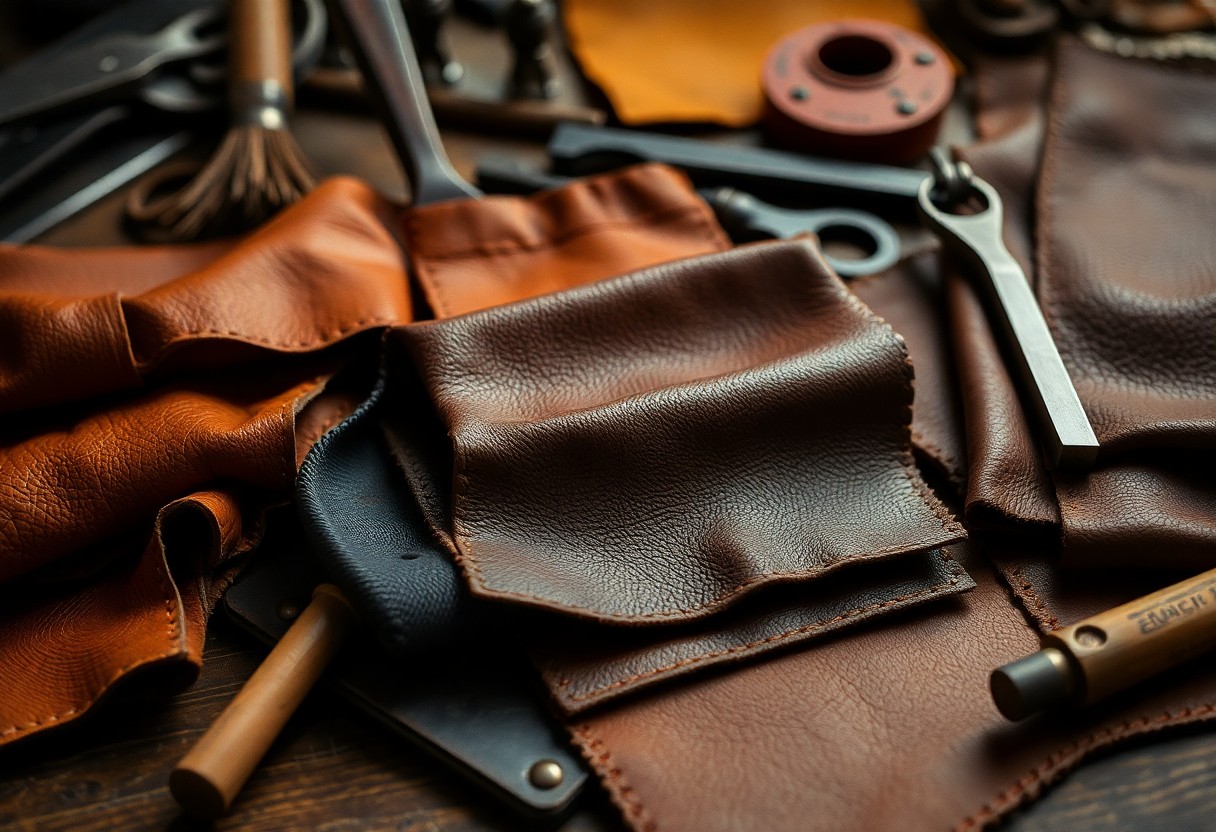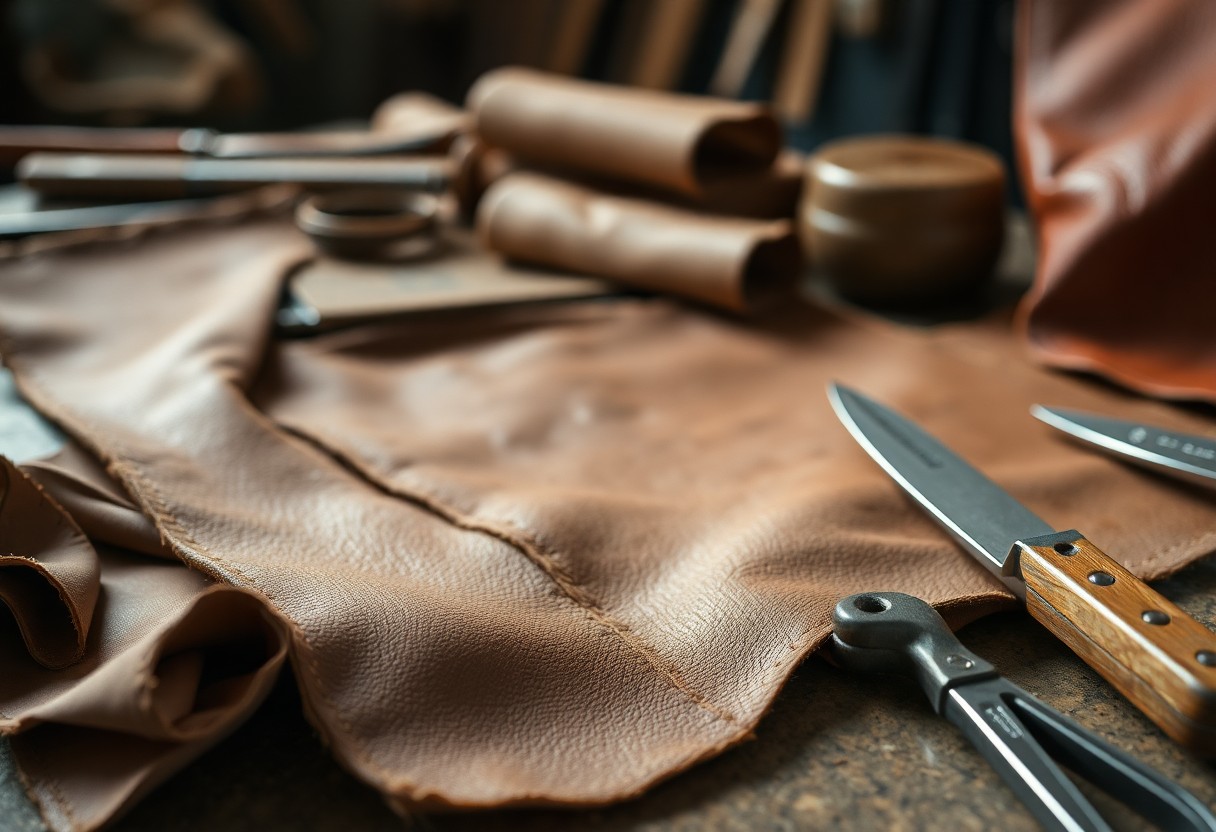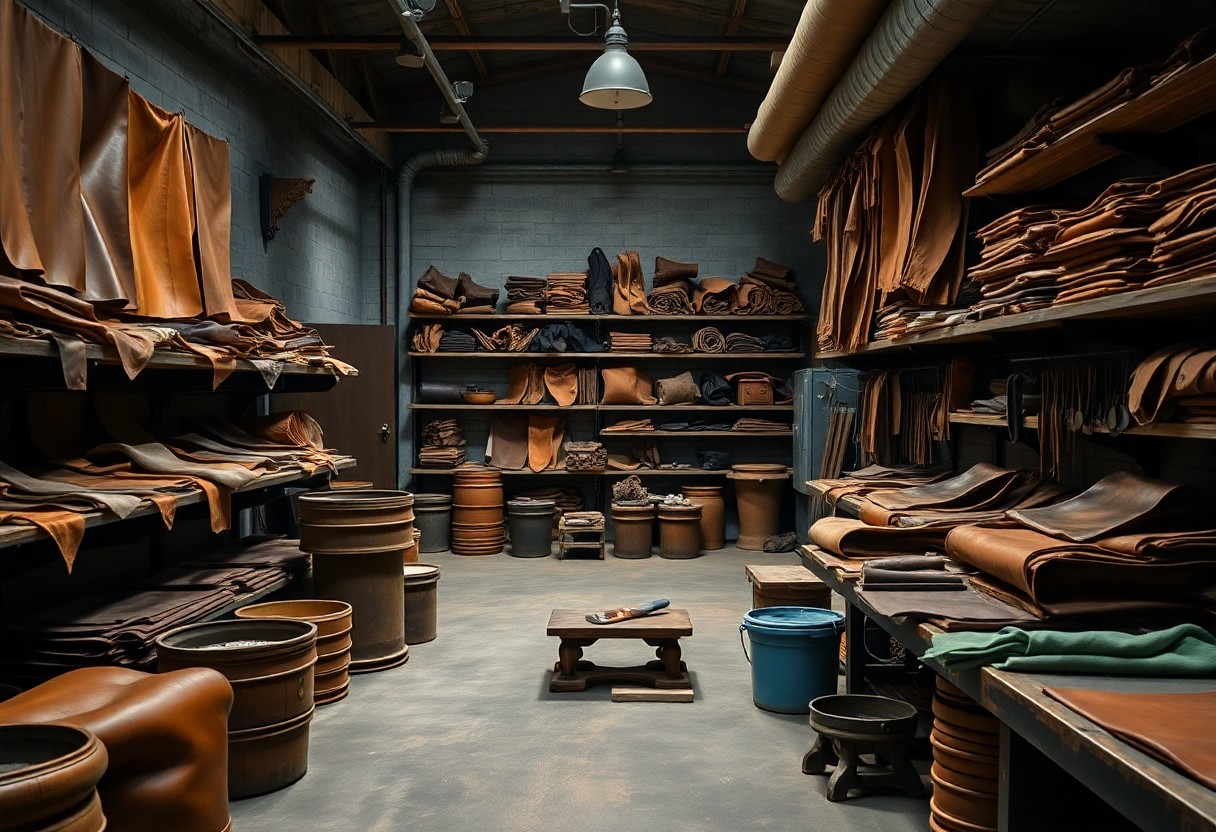
The craft of leather tanning has significantly evolved, transforming into a nuanced process that greatly influences the quality of leather products. Different tanning methods contribute distinct characteristics to leather, impacting its durability, water resistance, and overall aesthetic appeal. The tanning journey begins with raw hides and traverses several pivotal stages, which can include chrome tanning, vegetable tanning, and chrome-free methods. Each technique imparts unique properties to the leather, which profoundly affects usability, maintenance, and longevity. By delving into these processes, you can make well-informed choices about leather quality while being mindful of the environmental consequences, as some methods are far more sustainable than others.
Unlock the Secrets of Various Leather Tanning Techniques
Creating premium leather involves mastering a range of tanning methods that convert raw hides into usable leather. The primary techniques include chrome tanning, vegetable tanning, and chrome-free tanning. This comprehensive guide is designed to equip you with the understanding necessary to navigate the intricacies of each method, empowering you to choose the tanning process that aligns best with your specific leather needs and ethical considerations.
| Method | Characteristics |
| Chrome Tanning | Fast, water-resistant, 85% of global production |
| Vegetable Tanning | Natural, eco-friendly, 10% of production |
| Chrome-free Tanning | Environmental-friendly, 5% of production |
| Combination Tanning | Blends multiple methods for unique properties |
| Aldehyde Tanning | Specialized process for specific applications |
Delve into the Chrome Tanning Method for High-Quality Leather
The renowned chrome tanning process employs chromium (III) salts to produce leather that is not only soft and flexible but also highly desirable across various sectors. This method yields leather that is exceptional in water resistance and readily accepts dyes, making it a go-to choice in the industry. Impressively efficient, chrome tanning can be completed in as little as 24-48 hours, which is crucial for meeting the demands of mass production and ensuring timely delivery of leather goods.
Appreciate the Rich Heritage of Vegetable Tanning
As one of the most traditional and enduring methods, vegetable tanning utilizes natural tannins sourced from tree bark and leaves, providing a distinctive and eco-friendly alternative. This method is cherished for its capacity to produce leather that evolves beautifully over time, acquiring a rich patina that enhances its character. Various species, including oak, chestnut, and mimosa, contribute to the unique attributes of the final leather. This labor-intensive process typically spans around 4-6 weeks, yielding leather that is firmer and more structurally sound compared to its chrome-tanned counterparts.

In-Depth Exploration of the Leather Tanning Stages
The transformation of raw hides into exquisite finished leather involves a structured and meticulous process. Below is a detailed examination of each critical stage and its essential role in achieving superior leather quality.
Essential Pre-tanning Procedures for Unmatched Quality
To ensure the highest caliber of leather, raw hides must undergo a series of meticulous preparation steps. The initial phase involves soaking the hides in clean water for 24-48 hours to eliminate any salt and dirt, followed by a liming stage that effectively removes hair and fats. It is crucial to maintain precise pH control during this process to prevent damage to the hides and ensure a successful tanning outcome.
Key Steps in the Primary Tanning Phase for Quality Leather
The pretanning phase initiates with deliming and pickling, setting the stage for the application of primary tanning agents. The chrome tanning method, which incorporates chromium sulfate, is the most widely used, capable of producing leather in as little as 24 hours. In contrast, vegetable tanning employs natural tannins that extend the process to approximately 20-60 days.
Temperature regulation is another vital element in the tanning procedure. Chrome tanning is typically conducted at temperatures ranging from 35-40°C, whereas vegetable tanning occurs at lower temperatures of 20-25°C. Consistent monitoring of pH levels is imperative to prevent any adverse effects on the leather and ensure optimal absorption of tanning agents, which is essential for achieving the desired quality.
Advanced Leather Treatment Techniques to Elevate Quality
A diverse range of techniques is available to enhance the inherent properties of your leather. From surface finishing to deep penetration treatments, each method serves a specific purpose aimed at increasing durability and aesthetic appeal. Implementing the right treatment can extend your leather’s lifespan by up to 50% while significantly improving its resistance to water, heat, and wear, thereby preserving its integrity for years to come.
Exploring Surface Treatment Options for Enhanced Performance
Surface treatments for leather may include techniques such as waxing, buffing, and applying protective coatings. These methods can elevate water resistance by up to 70% and offer options between glossy and matte finishes to match your personal style. Moreover, surface treatments are essential for safeguarding leather against UV damage and the rigors of everyday use, ensuring that your products remain in excellent condition over time.
Dyeing Techniques: Transforming Leather Color and Longevity
The capacity for leather to absorb various types of dyes at different depths is contingent on the dyeing method chosen. Aniline dyeing penetrates deeply into the leather, providing a rich and uniform color, while surface dyeing allows for a more controlled application, enhancing the appearance. The dyeing process directly influences both the look and long-term durability of the leather, determining how gracefully it ages over time.
Additionally, the dyeing technique selected has a significant impact on the final attributes of the leather. Drum dyeing can achieve up to 95% color penetration, while spray dyeing offers enhanced precision for color control. It is worth noting that natural dyes are more eco-friendly but may fade approximately 20% faster than their synthetic counterparts, making the choice of dye an important consideration for environmentally conscious consumers.

Essential Factors Influencing Leather Quality During Processing
The quality of leather is shaped by a multitude of factors throughout the processing journey. Recognizing these elements is vital for achieving superior results in both leather selection and care. The tanning method, hide quality, and processing parameters are all crucial determinants of the final characteristics of the leather. By mastering these factors, you will be better equipped to evaluate leather quality according to your specific needs and preferences.
Choosing Raw Materials: The Foundation of Superior Leather Quality
When selecting raw materials, it is essential to focus on the condition of the hides and the animal source. The quality of your raw materials directly correlates with the properties of the finished leather product. The finest hides typically come from healthy animals, exhibiting minimal surface defects. Look for consistent thickness and the absence of parasitic damage. The selection process should consider the intended end-use since different applications require specific hide characteristics to ensure optimal performance and durability.
The Role of Processing Parameters in Ensuring Quality
A direct correlation exists between processing controls and the overall quality of leather. Maintaining precise control over pH levels, temperature, and chemical concentrations is essential for achieving the best results. The tanning duration generally ranges from 24 to 48 hours, with temperature controls set between 35-40°C. Careful attention to these parameters ensures consistent leather quality throughout the entire processing phase.
This meticulous oversight should encompass every stage of processing. Monitoring moisture content (ideally 45-55%), maintaining suitable drum speed during tanning, and ensuring accurate chemical dosing are all critical factors. Additionally, managing drying conditions is essential to prevent any damage to the leather. This comprehensive focus on quality parameters ultimately leads to the production of superior finished leather.
Expert Recommendations for Achieving Optimal Leather Treatment Results
Not all leather treatment processes yield identical quality levels. It is vital to emphasize temperature control, chemical balance, and timing precision throughout the tanning process to achieve the highest quality results.
- Regularly monitor pH levels
- Maintain consistent temperature
- Adhere to exact chemical ratios
- Document each step meticulously
Being vigilant about the indicators of proper tanning can enable you to produce high-quality finished leather that meets your expectations.
Strategies for Process Optimization in Leather Tanning
To ensure optimal results, managing your tanning environment is critical. Keep your workspace temperatures between 20-25°C and maintain humidity levels around 45-55% to create ideal conditions. Ensure that your chemical solutions are fresh and accurately measured, as this is key to achieving consistent results during the tanning process. Regular equipment maintenance is also essential for ensuring reliability and quality.
Ensuring Quality Standards Through Proper Leather Maintenance
The quality of leather is significantly influenced by your storage conditions and handling practices. It is best to store your leather in a dry, cool area that is shielded from direct sunlight to preserve its integrity and prevent deterioration. Regular moisture content checks and a rotation of stock every 30 days will help maintain optimal conditions.
Monitoring the tanning process is vital for upholding quality standards. Routine checks should encompass pH testing, physical inspections, and moisture content analysis. Keeping detailed records of all findings and adjusting your procedures based on the results is essential. Consistent quality control allows you to detect potential issues before they impact your final product, thereby ensuring high standards are maintained throughout the leather processing journey.

Comprehensive Comparison of Leather Tanning Techniques
To gain a well-rounded understanding of leather tanning, it is crucial to evaluate the various methods based on their respective benefits and drawbacks. Below is a thorough comparison of the main tanning techniques:
| Pros | Cons |
|---|---|
| Chrome tanning: Fast processing, cost-effective | Chrome tanning: Environmental concerns, potential disposal issues |
| Vegetable tanning: Eco-friendly, natural process | Vegetable tanning: Time-consuming, requires higher water usage |
| Chrome-free tanning: Environmental safety, good quality | Chrome-free tanning: Complex process, higher costs |
| Combination tanning: Versatile properties | Combination tanning: Challenging quality control |
Economic Implications of Leather Tanning Decisions
The choices you make regarding leather tanning methods can have substantial effects on production costs. Chrome tanning boasts a cost efficiency of 85% compared to vegetable tanning, while chrome-free methods often result in increased costs by 20-30%. Understanding these financial considerations is essential for effective budgeting and planning within the leather production industry.
The Impact of Tanning Choices on Leather Quality
The quality of even the finest leather can be severely undermined by poor tanning choices. The tanning method you select directly affects critical attributes such as durability, water resistance, and texture, which are fundamental for the leather’s overall performance.
For instance, leather treated through chrome tanning showcases superior water resistance and flexibility, making it ideal for a variety of uses, while leather tanned using vegetable methods is known for its excellent aging characteristics, developing a unique patina over time that enhances its aesthetic value and appeal.
Essential Insights on Leather Tanning and Treatment Techniques
The information presented underscores how different leather tanning and treatment methods significantly influence the quality and characteristics of your leather products. The decision between chrome, chrome-free, or vegetable tanning will have a profound effect on your leather’s durability, texture, and environmental footprint. Furthermore, the dyeing technique you choose—such as aniline or crust—will impact your leather’s color depth and aging process. Lastly, the type of finishing method employed—whether full grain, corrected grain, or top-coated—determines the standards for appearance, breathability, and maintenance needs. A thorough understanding of these processes empowers you to make informed decisions regarding your leather purchases and care practices, ultimately ensuring satisfaction and longevity of your leather products.
Your Leather Tanning Queries Addressed: FAQs
Q: What are the main differences between chrome tanning and vegetable tanning?
A: Chrome tanning utilizes chromium salts, resulting in soft, water-resistant leather that is processed quickly and economically, accounting for 85% of global leather production. Conversely, vegetable tanning employs natural tannins derived from tree bark and leaves, which requires a longer processing time and produces leather that develops character with age. While vegetable-tanned leather is more environmentally friendly in terms of disposal, it is more susceptible to staining when compared to chrome-tanned options.
Q: How does aniline dyeing affect leather quality and appearance?
A: Aniline dyeing involves immersing leather in dye baths that penetrate deeply into the material. This technique creates a uniform color throughout the leather, providing excellent color retention. Today’s aniline-dyed leather is often dyed partially through rather than completely, which helps maintain a lighter middle layer, enhancing the stability of the leather while ensuring a rich color depth on the surface, resulting in a more visually appealing final product.
Q: What differentiates full grain leather from corrected grain leather?
A: Full grain leather maintains its natural surface without sanding or artificial overlays, showcasing natural pores and the strongest fiber structure, and can be restored when scuffed. In contrast, corrected grain leather undergoes sanding and is covered with a plastic layer. While corrected grain is easier to clean and handle, it typically lacks breathability and may crack over time without repair options, making full grain leather a more desirable choice for quality-conscious consumers.
The Article Guide to leather tanning and treatment methods processes types and their impact on quality appeared first on My Shoes Finder
The Article Leather Tanning: Methods, Processes, and Quality Impact Guide Was Found On https://limitsofstrategy.com
The Article Leather Tanning Methods: Processes and Quality Impact Explained First Appeared ON
: https://ad4sc.com










Comments are closed